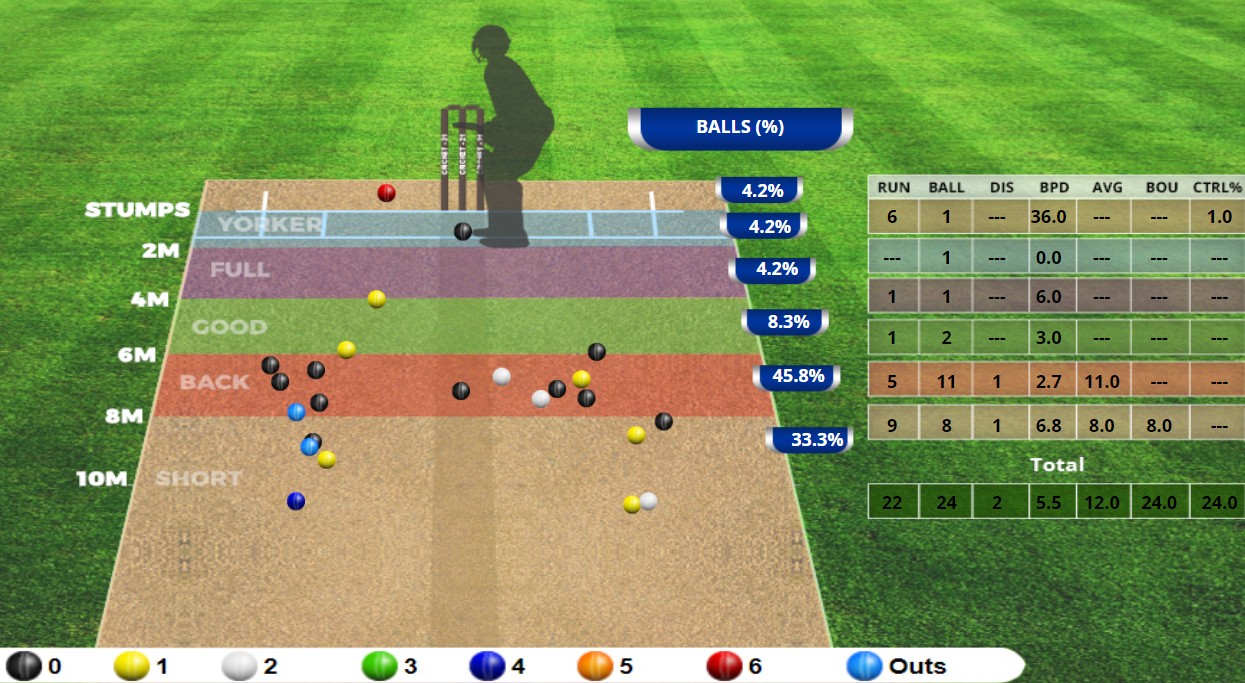 OPINION
OPINIONTwo matches. Two wins. Rahul Dravid could not have asked for a better start on the results front. But with respect to selection and experimentation, have India been brave enough in this series? We look at this and two other key takeaways from the second T20I, including New Zealand’s Daryl Mitchell conundrum.
Are India guilty of not experimenting enough?
India have completed another bilateral series win, that too in dominant fashion. They have now lost just one bilateral T20I series at home since 2017. All is well.
But have they utilized this series smartly? Or are they guilty of not experimenting enough?
Heading into this series, we knew a lot of things beforehand.
We knew that Rohit and Rahul are arguably the best opening pair in the world. We knew that Ashwin is a proper craftsman who is still elite with the white ball, and we knew that Suryakumar Yadav, at least in terms of dynamism, is the best number three in the country.
The whole point of this series was to find out new things. To experiment.
But truth be told, two games in, India have not done a great job at that.
We know Siraj was injured, but with one game in the bag, India could - and should - have tried out Avesh Khan. In a series like this with little significance, there was really no need for Bhuvneshwar to play in the first place, let alone play back-to-back matches.
It is also worth asking if Ashwin, who will also be playing the Tests in a week’s time, had to play this series.
Venkatesh Iyer was picked as the seam bowling all-rounder who can double-up as the sixth bowler, but he is yet to bowl a single over. In a way, this defeats the purpose. For the whole point of picking him in the XI was to find out whether he was capable enough of filling the void left by Pandya.
After winning the toss today, India had a chance to challenge themselves by trying to address one of their Achilles Heels, which is batting first. Having already won the first match of the series, they had a golden chance to take a risk. Yet they didn’t, and chose the safe option of chasing, owing to being focused more on the result.
They got what they wanted as they comprehensively won the match (and sealed the series), but ultimately, learnings have been minimal.
With the series now in the bag, India will, in all likelihood, give the unused players a chance in the third game, but in a nothing-to-play-for bilateral series, they could have experimented a lot more.
Opportunities like this won’t come around too often.
Is the Daryl Mitchell experiment sustainable?
New Zealand woke up one fine day and decided that they would like to open the batting with Daryl Mitchell. And it worked. The move worked well enough for the Kiwis to reach the T20 World Cup final, with Mitchell himself playing a blinder of a knock in the semi-final. A masterstroke in every sense.
But as we build towards the next T20 World Cup in Australia, where the pitches will be flat and the conditions will be the polar opposite of the UAE, it is worth asking if it’ll be sustainable for New Zealand to continue opening with Mitchell beyond this series.
In 9 T20Is as an opener to date, Mitchell has a SR of 135.02. On the whole, this is excellent. But a deeper introspection tells us that there are evident limitations in his batting that will inhibit New Zealand when they have a full strength side at their disposal, particularly on good batting wickets.
The most noticeable shortcoming is how he fares in the middle-overs, particularly against spin. From 133 in the powerplay, Mitchell’s overall SR drops to 119 in overs 7-15. Against spin, however, the scoring rate takes a nosedive and drops to a mere 103.13.

Today was one of those nights where his slowing-down post the powerplay hurt the side. At 64/1 after 6 overs, New Zealand had got off to the perfect start. And yet the next 32 balls yielded just 26 runs. Mitchell was the prime culprit, scoring just 11 off the 13 balls, not hitting a single boundary. This phase ultimately cost the Kiwis the game.
Assuming a full strength side will have all of Williamson, Phillips and Conway - who are all anchors/semi-anchors in their own right - having Mitchell as an opener might inhibit the side.
New Zealand might, therefore, be better off laying their faith in someone like Finn Allen, who is not only the kind of opener who does not slow down, but also puts the fear of god in bowlers. Particularly as we approach a World Cup in Australia where teams can ill-afford to slow down.
Allen has a career T20 SR of 176.42 - which is outrageous - but crucially, he does not slow down in the middle. His scoring rate in the first six is 185, but it remains at 160 during overs 7-15. He maintains an excellent strike rate even versus the spinners, against whom he strikes at 154.79 in the middle.
As a horses-for-courses move, the Mitchell promotion worked. In fact, it worked way better than it should have. But it might just be time for the Kiwis to start looking ahead and cut the experiment short.
Harshal Patel passes his first test with flying colours
After an uneventful first six balls, Harshal Patel started doing Harshal Patel things. And if IPL 2021 taught us something, it’s that batsmen, more often than not, turn powerless when Harshal Patel does Harshal Patel things. The Kiwis, today, were no exception.
On the first ball of his second over, Harshal bowled a fast wide one that took Mitchell aback, and then got his man on the very next ball through a trademark slower one. He could very well have had two in two, only for a slower delivery - that outfoxed Seifert - to fall agonizingly short of the fielder at cover.
This over kick-started his spell, and then he eventually rounded it off with the key wicket of Glenn Phillips in his penultimate over. It was a huge wicket, for Phillips was well-set and ready to implode. His dismissal saved India at least 15-20 runs, if not more.
What was impressive about Harshal’s showing tonight was his approach. No nerves, no moving away from the tried-and-tested template. He bowled like he would usually do in an IPL game.
16 of the 24 balls Harshal bowled tonight were off-cutters - his go-to ball - and unsurprisingly, it yielded him the most success. Those 16 balls cost just 13 runs and accounted for the wickets of both Mitchell and Phillips. Why they turned out to be effective is because he kept the batters on their toes by mixing up the length and pace.

Harshal Patel pitch-map in the 2nd T20I
His composure, too, was laudable. Phillips hit him for a six off the first ball of the 17th over - a full-toss - and then Harshal bowled a beamer on the next delivery as the ball slipped out of his hand. A single ball had cost 9 runs and he could so easily have lost the plot. Yet he didn’t. Harshal did what he does best, kept his composure and finished strongly.
Post the no-ball, he conceded just 7 runs off 11 balls while taking the wicket of Phillips.
This series, as a whole, might be inconsequential, but taking into account the bigger picture, performances like these augurs well for India.